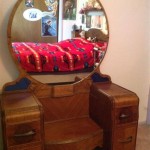How To Mirror iPad to Sony TV Without WiFi
Mirroring an iPad to a Sony TV can significantly enhance the viewing experience, allowing users to share photos, videos, presentations, and apps on a larger screen. Typically, mirroring relies on a shared WiFi network between the devices. However, situations may arise where a WiFi connection is unavailable or unreliable. This article provides comprehensive methods to mirror an iPad to a Sony TV without using WiFi, ensuring that screen mirroring is still possible in various environments.
The absence of a WiFi network does not preclude the ability to mirror an iPad to a Sony TV. Several alternative techniques utilize physical connections or proprietary technologies that bypass the need for a wireless network. Understanding these methods and possessing the necessary equipment allows for seamless screen mirroring regardless of WiFi availability.
Using an HDMI Adapter and Cable
One of the most reliable methods for mirroring an iPad to a Sony TV without WiFi is using a physical connection via an HDMI adapter and cable. This method provides a direct, stable connection, eliminating any reliance on wireless networks. The adapter converts the iPad's Lightning or USB-C port to an HDMI output, which can then be connected to the Sony TV's HDMI input.
First, it is crucial to determine the correct adapter type for the iPad. iPads with a Lightning port require a Lightning to HDMI adapter, while newer iPad Pro and iPad Air models with a USB-C port require a USB-C to HDMI adapter. These adapters are readily available from various electronics retailers and online stores. It's recommended to purchase a reputable brand to ensure compatibility and reliable performance. Some adapters may also have a charging port, allowing the iPad to be charged while connected to the TV.
Once the appropriate adapter is acquired, an HDMI cable is needed to connect the adapter to the Sony TV. HDMI cables are universally compatible with most TVs and are available in various lengths. Ensure the cable is long enough to comfortably reach between the iPad and the TV without being excessively long, which could create clutter.
The connection process is straightforward. Plug the HDMI adapter into the iPad's Lightning or USB-C port. Connect one end of the HDMI cable into the adapter's HDMI port and the other end into one of the Sony TV's HDMI ports. Power on the Sony TV and select the corresponding HDMI input using the TV's remote control. The iPad's screen should then be mirrored onto the TV. Some iPads may prompt for permission to trust the connected device; grant permission to complete the connection.
This method offers several advantages. It provides a stable and reliable connection, free from the interference that can sometimes affect wireless connections. It also supports high-resolution video and audio, providing a superior viewing experience compared to some wireless mirroring methods. Furthermore, it's a secure method, as no data is transmitted over a network, reducing the risk of unauthorized access.
However, using an HDMI adapter and cable also has some limitations. The iPad must remain physically connected to the TV, restricting movement. Additionally, the adapter and cable add to the cost, although they are a one-time investment. The iPad's battery may drain faster while connected, especially when playing videos or running resource-intensive apps, highlighting the advantage of using an adapter with a charging port.
Utilizing MHL (Mobile High-Definition Link)
While not as prevalent as HDMI, MHL (Mobile High-Definition Link) offers another option for mirroring an iPad to a Sony TV without WiFi. MHL is an interface standard that allows mobile devices to transmit high-definition video and audio to displays such as TVs and monitors. However, it's important to note that MHL support is becoming less common in newer devices.
To use MHL, both the iPad (or its adapter) and the Sony TV must support the MHL standard. Check the specifications of both devices to confirm compatibility. If the iPad supports MHL directly (which is unlikely for newer models), a dedicated MHL cable can be used to connect the iPad to the TV. More often, an adapter is required to convert the iPad's Lightning or USB-C port to an MHL output.
Once the compatibility is confirmed and the necessary adapter or cable is obtained, the connection process is similar to using an HDMI connection. Connect the MHL adapter to the iPad's port and the MHL cable to the adapter's MHL port. Connect the other end of the MHL cable to the Sony TV's MHL-enabled HDMI port. Power on the TV and select the corresponding HDMI input. The iPad's screen should then be mirrored onto the TV.
MHL offers some advantages similar to HDMI, such as a stable connection and support for high-resolution audio and video. It also has the potential to charge the iPad while it is connected to the TV, depending on the specific implementation. However, MHL has some drawbacks. Its limited adoption means that finding compatible devices and adapters can be challenging. Also, some MHL implementations may require additional configuration or settings adjustments on the TV or the iPad.
Compared to HDMI, MHL is generally considered a less versatile and less widely supported option. It is more likely that an HDMI-based solution will be more readily available and compatible with a wider range of devices. Therefore, while MHL is theoretically an option for mirroring an iPad to a Sony TV without WiFi, it is often not the most practical or convenient choice.
Personal Hotspot and Local Network Alternatives
Although the primary objective is to mirror an iPad to a Sony TV without a traditional WiFi network, creating a local network using the iPad's Personal Hotspot feature can facilitate mirroring in specific scenarios. This approach does not rely on an external WiFi network but leverages the iPad's cellular data connection to create a local network for mirroring. This method is applicable if the Sony TV has built-in mirroring capabilities that require a network connection.
First, the iPad's Personal Hotspot feature must be enabled. This is typically found in the iPad's settings under the "Cellular" or "Personal Hotspot" menu. Enable the hotspot and set a password to secure the connection. Note that using the Personal Hotspot will consume cellular data, so it's essential to monitor data usage to avoid exceeding data limits.
Next, connect the Sony TV to the iPad's Personal Hotspot. On the TV, navigate to the network settings and search for available WiFi networks. The iPad's Personal Hotspot should appear in the list of available networks. Select the hotspot and enter the password to connect the TV to the iPad's network.
Once the TV is connected to the iPad's Personal Hotspot, use the TV's built-in mirroring capabilities. Sony TVs often support technologies like Miracast or Chromecast. If the Sony TV supports Miracast, enable Miracast on the TV. On the iPad, use AirPlay mirroring or a compatible mirroring app to connect to the TV's Miracast receiver. If the Sony TV supports Chromecast, ensure Chromecast is enabled and configured on the TV. Then, use a Chromecast-compatible app on the iPad to cast content to the TV.
This method offers the advantage of wireless mirroring without requiring an external WiFi network. It can be useful in situations where a WiFi network is unavailable or unreliable. However, it has some limitations. It relies on the iPad's cellular data connection, which can be costly and may not be suitable for streaming large amounts of data. The performance of the mirroring may also be affected by the strength and speed of the cellular data connection. Additionally, the Sony TV must support compatible mirroring technologies like Miracast or Chromecast.
Furthermore, if the goal is to avoid any internet usage, this method may not be ideal. Although it bypasses traditional WiFi, it still requires a cellular data connection, which inherently involves internet access. A true "without WiFi" solution, in the strictest sense, would be limited to direct physical connections like HDMI or MHL.
In summary, while the Personal Hotspot approach provides a workaround for mirroring without a traditional WiFi network, it's important to consider the data usage implications and the reliance on the iPad's cellular data connection. The direct connection methods using HDMI or MHL provide a more deterministic and isolated way to mirror an iPad to a Sony TV without any network dependency.
Ultimately, the best method for mirroring an iPad to a Sony TV without WiFi depends on the specific circumstances and requirements. If a stable and reliable connection is paramount, and mobility is not essential, using an HDMI adapter and cable is often the preferred choice. If wireless mirroring is desired, and cellular data usage is acceptable, the Personal Hotspot method can be a viable alternative. MHL remains an option, but its limited adoption makes it less practical in many cases.

How To Use Airplay Apple Tv Without Wi Fi Full Guide

Simple Ways To Mirror Iphone Tv Without Wifi 6 Steps

Screen Mirroring Iphone To Sony Tv Free Trial Ipad App

How To Use Airplay Apple Tv Without Wi Fi Full Guide

How To Mirror Iphone Tv Without Wifi 3 Easy Methods Ps

Screen Mirroring Iphone To Sony Tv Free Trial Ipad App

How To Use Airplay Apple Tv Without Wi Fi Full Guide

How To Mirror Iphone Tv Without Apple

3 Ways To Mirror Iphone Tv Without Apple Istreamer

How To Mirror Iphone Tv Without Wifi 3 Easy Methods Ps







